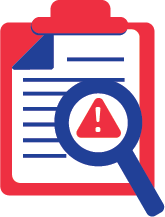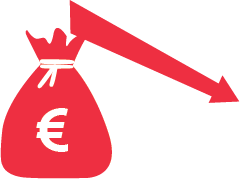Best practices to avoid 7 of the common marine navigation mistakes that can lead to accidents
At Marine Digital, we discussed various cases of navigation errors with our advisors and partners in the maritime industry, as well as with potential shipping clients, and then identified a few basic maritime skills and navigation best practices that could save the day.
There is an old story about a ship sailing upriver in port when another ship was spotted by radar. There is already a marine pilot on board who reports that there is no mention of outgoing traffic and that the vessel on the radar is likely at anchor.
For confirmation, he calls the vessel via VHF, identifies it by its geographic position and asks: "The vessel is in position X, are you at anchor?"; To which the other ship replies: "This is a ship in X position, yes, I am a tanker." The resulting confusion leads to an accident.
Those who use VHF to communicate at sea will recognize that such a misunderstanding is possible. The use of VHF for collision avoidance is always a subject of controversy, and whether or not to use it will depend on the individual case.
At Marine Digital, we discussed various cases of navigation errors with our advisors and partners in the maritime industry, as well as with potential shipping clients, and then identified a few basic maritime skills and navigation best practices that could save the day.
For confirmation, he calls the vessel via VHF, identifies it by its geographic position and asks: "The vessel is in position X, are you at anchor?"; To which the other ship replies: "This is a ship in X position, yes, I am a tanker." The resulting confusion leads to an accident.
Those who use VHF to communicate at sea will recognize that such a misunderstanding is possible. The use of VHF for collision avoidance is always a subject of controversy, and whether or not to use it will depend on the individual case.
At Marine Digital, we discussed various cases of navigation errors with our advisors and partners in the maritime industry, as well as with potential shipping clients, and then identified a few basic maritime skills and navigation best practices that could save the day.
1. Do not rely solely on the Safety Management System
When approaching the port and after determining the location on the map, the navigator informed the captain that the ship was north of the proposed route and he should go south. Based on the feedback, the captain began to adjust the course, but the radar pattern of the landmarks and the navigator's assessment did not match. So, the captain checked himself and realized that the Officer Of the Watch (OOW) had incorrectly indicated the latitude, the ship had just crossed the equator and was in the Southern Hemisphere.
Similar to this incident, when crossing Greenwich or meridian or 180 ° longitude, the position is marked east instead of west, or vice versa.
With the increased use of ECDIS, the possibility of such errors is minimized. But what navigators still do not understand is the principle of tracking the position of the ship. They rely on the company's Safety Management System (SMS) to guide them and then, regardless of their own situation, determine positions from the SMS at specified intervals. This does not help, because SMS can help, but the navigator must make an informed decision. Whenever the navigator plots a position, it should be followed by the exact position (DR position), which will give an approximate estimate of the vessel's position during the next plot.
Similar to this incident, when crossing Greenwich or meridian or 180 ° longitude, the position is marked east instead of west, or vice versa.
With the increased use of ECDIS, the possibility of such errors is minimized. But what navigators still do not understand is the principle of tracking the position of the ship. They rely on the company's Safety Management System (SMS) to guide them and then, regardless of their own situation, determine positions from the SMS at specified intervals. This does not help, because SMS can help, but the navigator must make an informed decision. Whenever the navigator plots a position, it should be followed by the exact position (DR position), which will give an approximate estimate of the vessel's position during the next plot.

2. Do not rely solely on radar
On the high seas, the captain saw a small yacht in the immediate vicinity of the bow of his ship from his cabin. He ran to the bridge, turned on manual control and avoided a collision. In this case, the officer in charge of the watch did not notice the yacht as he was steering only with radar and the target was not detected due to its size. During this time, the OOW was changing course to avoid a collision with another ship that was seen on radar.
In this case, if the OOW had carefully looked out the bridge window, the situation could have been avoided. A trained human eye can pick up a lot of information, and the brain can process it faster than a complex algorithm spits it out onto the radar monitor screen. Thus, a proper visual look-out is a key for the safety of navigation.
In this case, if the OOW had carefully looked out the bridge window, the situation could have been avoided. A trained human eye can pick up a lot of information, and the brain can process it faster than a complex algorithm spits it out onto the radar monitor screen. Thus, a proper visual look-out is a key for the safety of navigation.

In low visibility conditions and in areas of heavy traffic, the AB on duty informed OOW of a target located directly ahead on the radar. The officer in charge took no action, as he assumed that the target was either a fishing boat that was receding as the ship approached it, or it was a false echo. This led to a collision with the detected target that turned out to be drifting.
In the above case, a course alteration, even for a "false echo", would have been the best decision for the safety of the vessel. Safe navigation with radar is only possible when the navigator is confident in his understanding of the equipment and its limitations.
The risk of collision should be assessed even with a non-identified radar target, and if there is a risk of collision, a course alteration should be engaged. Later, by monitoring the echo and its movements, the OOW will be able to identify the type of the target object.
In the above case, a course alteration, even for a "false echo", would have been the best decision for the safety of the vessel. Safe navigation with radar is only possible when the navigator is confident in his understanding of the equipment and its limitations.
The risk of collision should be assessed even with a non-identified radar target, and if there is a risk of collision, a course alteration should be engaged. Later, by monitoring the echo and its movements, the OOW will be able to identify the type of the target object.
4. Carefully read the buoys
An experienced chief officer boarded the ship to pick up the pilot through the buoyed canal. While entering the canal, a starboard buoy was seen directly ahead. Seeing the buoy directly ahead, the senior officer immediately ordered to keep to starboard, the captain canceled his order, straightened the ship again and returned it to its previous course.
Somehow similar to the East-West-North-South cases mentioned above, this can happen due to a concentration disturbance, leading to a confusion about the color of the buoys and which side to pass them from. This is usually due to different colors of buoys in IALA regions - region A and region B, or within some ports, the vessel direction will change (clockwise around land masses), or if buoys with a preferred channel are used.
This confusion can be minimized by remembering that "can port - cone to stbd" for ingoing and vice versa for outgoing.
Somehow similar to the East-West-North-South cases mentioned above, this can happen due to a concentration disturbance, leading to a confusion about the color of the buoys and which side to pass them from. This is usually due to different colors of buoys in IALA regions - region A and region B, or within some ports, the vessel direction will change (clockwise around land masses), or if buoys with a preferred channel are used.
This confusion can be minimized by remembering that "can port - cone to stbd" for ingoing and vice versa for outgoing.

3. Alter the course as early as possible to avoid collisions

5. Watch the Rudder angle
While going through a busy Traffic Separation Scheme, the captain had control of the vessel and the OOW was communicating with VTS. The AB reported that a fishing boat on the starboard side had started moving and was crossing the bow. The captain then checked the movement of the target on the radar and ordered the helmsman "starboard 20".
At this time the telephone bridge rang, and the captain answered it. At The end of the telephone conversation, when he looked up, he noticed that the fishing boat still hadn't moved away from the bow of the ship, and ordered: "Hard on starboard." At this time, the bridge crew realized that although the helmsman was executing the order, he was actually steering the rudder in the opposite direction.
When giving a command to the helmsman, the OOW or the Captain should check the outcome of the command in order to make sure that it is executed properly. It is always important to keep an eye on the Rudder angle indicator (RAI) to break this chain of errors.
At this time the telephone bridge rang, and the captain answered it. At The end of the telephone conversation, when he looked up, he noticed that the fishing boat still hadn't moved away from the bow of the ship, and ordered: "Hard on starboard." At this time, the bridge crew realized that although the helmsman was executing the order, he was actually steering the rudder in the opposite direction.
When giving a command to the helmsman, the OOW or the Captain should check the outcome of the command in order to make sure that it is executed properly. It is always important to keep an eye on the Rudder angle indicator (RAI) to break this chain of errors.

6. Strengthen the communication between crew members
A vessel was in transit through the Suez Canal with a pilot on board. The vessel was supposed to move along the centerline of the canal, however, as it deviated from the center line, the pilot and the crew on the bridge used the corrective wheel and thrusters to counteract this deviation. By that time, the ship had swung heavily and approached the bank on the opposite side. The stern of the vessel touched the rocky sea bottom. There was a heavy thud and a vibration in the wheelhouse and engine room. The ship's speed dropped and increased again. All ship crew noticed the vibration. The engine room called the bridge to confirm that everything was in order. Both watches confirmed to the pilot if everything was in order, to which the pilot replied in the affirmative. The vessel picked up speed again and resumed movement along the canal. The most senior officer of the watch did not call the captain and did not discuss the incident with him later. However, below the waterline, the bow of the hull was damaged and its strength in the impacted zone was significantly reduced. There was a slight deformation, but below the waterline. Later when the ship was loading the cargo at port, there was again a big dull sound, and the OOW noticed that water gushed into the ballast tanks No. 1, 2, 3 at the port side. Due to the constant stress on the damaged, deformed and worn plate, the weak zone collapsed and failed.
Often we have seen junior officers on board ships respond "Yes, sir" to any given task, and later find that something else has been done about the subject.
Various incidents on board require the seafarer to act and react according to predefined and predetermined patterns during routine and emergency situations. For a variety of non-standard tasks, companies have also introduced procedures for group meetings, on board training and risk assessments. These interactions help the captain or other team leaders recognize the merits and weaknesses of their team members before assigning a task. Communication between the team leader and team members, or between team members, is key here in avoiding the occurrence of human error chains by identifying and eliminating their root causes.
Often we have seen junior officers on board ships respond "Yes, sir" to any given task, and later find that something else has been done about the subject.
Various incidents on board require the seafarer to act and react according to predefined and predetermined patterns during routine and emergency situations. For a variety of non-standard tasks, companies have also introduced procedures for group meetings, on board training and risk assessments. These interactions help the captain or other team leaders recognize the merits and weaknesses of their team members before assigning a task. Communication between the team leader and team members, or between team members, is key here in avoiding the occurrence of human error chains by identifying and eliminating their root causes.

7. Get familiarized with the ship ECDIS features
Human errors in maritime accidents relating to ECDIS were researched. In the tests carried out on 21 navigation officers that actively work and have different periods of maritime service, it was revealed that 85% of the subjects did not know about the basic safety functions and alarm settings of the device. Only 23.8% of the subjects were able to notice that the drawn route crossed by the areas where running aground was a possibility. Based on the study, it was emphasised that information of a worryingly low level of ECDIS usage jeopardises the safety of navigation.
ECDIS procedures on familiarisation training should be reviewed by flag states for different
navigation stages, including:
To reduce risk factors, we are developing a Marine Digital FOS (Fuel Optimization System) solution that processes ship telemetry data, weather forecasts and other external factors affecting maritime safety. Route planner as part of Marine Digital FOS allows you to select optimal sea routes from both, economy and safety points of view.
During the development process, we have formed 4 solutions that are suitable for charters, shipowners and fleet managers of different types of vessels for:
Read more about Optimizing your vessel's route for time and fuel consumption
ECDIS procedures on familiarisation training should be reviewed by flag states for different
navigation stages, including:
- In 45% of the accidents studied, it was observed that ECDIS's warning feature, which should be active when the ship enters shallow waters, does not work. For this reason, it is recommended that navigation officers cross- check their position, especially in shallow waters, by using Radar and Visual methods besides ECDIS;
- The line relation analysis showed that the wrong cart scale used in ECDIS when voyage procedures were insufficient in six accidents. Selecting the wrong chart scale may cause underwater hazards not to be detected by the navigator. ECDIS procedures that include emergency situations, such as loss of signal or failure and chart scales, to be used at different stages of voyage, such as coastal navigation and pre-arrival should be created. Procedures for updating and checks of ENCs and nautical publications should be also applied;
- it is seen that ECDIS warning alarms were set incorrectly by duty officers in 41% of accidents. ECDIS settings should be double-checked including all safety check features (route check, safety frame, etc.); anti-grounding settings related ships drought safety contour, safety depth and deep contour. Responsibilities of shipping companies and masters to verify that the officers of the watch (OOW) are competent in terms of ECDIS usage should be reviewed by flag states;
To reduce risk factors, we are developing a Marine Digital FOS (Fuel Optimization System) solution that processes ship telemetry data, weather forecasts and other external factors affecting maritime safety. Route planner as part of Marine Digital FOS allows you to select optimal sea routes from both, economy and safety points of view.
During the development process, we have formed 4 solutions that are suitable for charters, shipowners and fleet managers of different types of vessels for:
Read more about Optimizing your vessel's route for time and fuel consumption


TOP 5 factors contributing to lower fuel costs for Shipping companies
Get a presentation with a full description of the features and free pilot project with trial of Marine Digital FOS for 2 months
"Clicking the button, you consent to the processing of personal data and agree to the privacy policy"

Get an overview "The Pathway to Zero Carbon Shipping:
IMO Compliance and CII Optimization through SEEMP" on email and download it for FREE! Leave your email now!
"Clicking the button, you consent to the processing of personal data and agree to the privacy policy, as well as consent to subscribe to the newsletter. "
Аdvantage of Fuel Optimization System from Marine Digital:

Marine Digital FOS can be integrated with other system and third-party's solutions through the API. To implement vessel performance monitoring for any vessel, we are using mathematical algorithms, machine learning and the same equipment as in FOS. The more data we collect from vessels, the more precise reports and recommendations our system will perform according to your individual requirements in fleet management.
If you have any questions about the solutions and the Marine Digital System platform, write to us, we will be happy to answer
If you have any questions about the solutions and the Marine Digital System platform, write to us, we will be happy to answer

Increased business process speed

Reducing to zero the number of errors

Best offer to the clients

Reduction in operating expenses
Have a questions?





